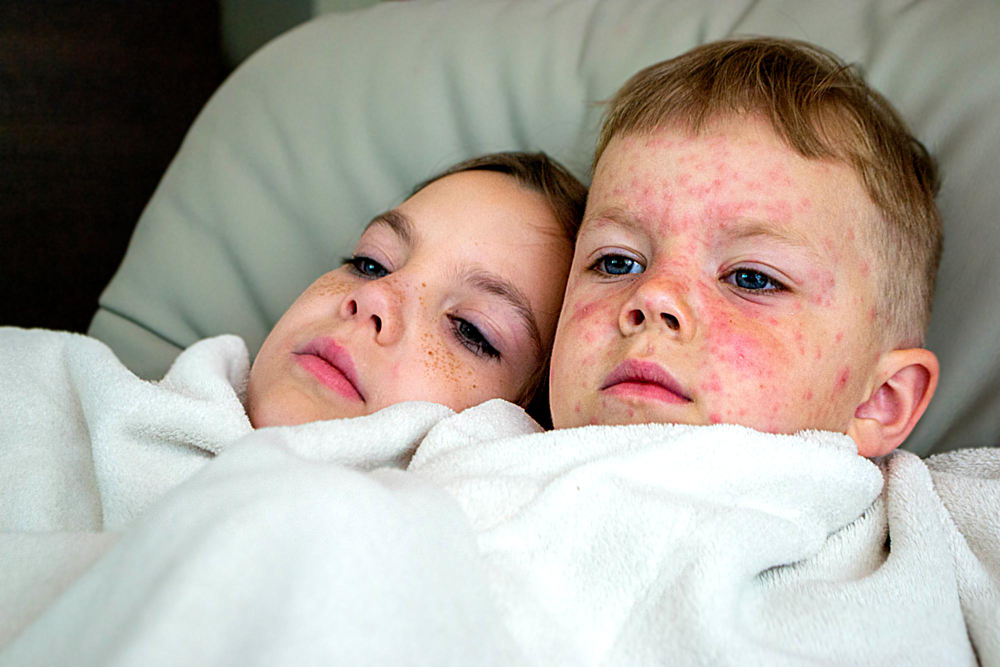Red Cheeks in Babies
Are you wondering why your baby’s cheeks are red? You’re not alone. Many parents are searching for answers to this common concern. The redness in your baby’s cheeks could be due to a variety of reasons. One possibility is teething, as this can cause increased blood flow to the face. Another common cause is drooling, which can irritate the skin and lead to redness. Allergies may also be to blame, as certain foods or environmental factors can cause a reaction in your baby’s delicate skin. Additionally, a viral infection could be the culprit, as some illnesses can cause flushed cheeks.
If you’re looking for ways to alleviate the redness, there are a few remedies you can try. Keeping your baby’s skin clean and dry can help prevent irritation. Using a gentle moisturizer can also provide relief. If you suspect allergies, it may be helpful to identify and avoid any potential triggers. However, if the redness persists or is accompanied by other symptoms, it’s important to seek medical advice. A healthcare professional can provide a proper diagnosis and recommend appropriate treatment if necessary. Remember, every baby is unique, so what works for one may not work for another. Trust your instincts and reach out for help if needed.

1. Why Is Your Baby’s Cheeks Red? Understanding the Causes and Solutions
Babies with red cheeks can be a cause for concern for many parents. Understanding the reasons behind this common occurrence is essential for addressing the issue effectively.
Uncovering the Culprits: What Causes Red Cheeks in Babies?
There are various factors that can contribute to your baby’s rosy cheeks. It could be due to teething, skin irritation, weather conditions, or even a sign of illness.
Soothing Solutions: How to Alleviate Red Cheeks in Babies
Fortunately, there are several remedies and tips that can help alleviate your baby’s red cheeks. From using gentle skincare products to adjusting the room temperature, these solutions can provide relief and comfort to your little one.
How To Fix Red Cheeks in Babies: Effective Remedies and Tips
Babies with red cheeks can be a cause for concern for parents. However, there are effective remedies and tips that can help alleviate this issue.
Identifying the cause
Understanding the underlying cause of your baby’s red cheeks is the first step in finding a solution. It could be due to teething, eczema, or even a reaction to certain foods or environmental factors.
Keeping the skin moisturized
One way to address red cheeks is by keeping your baby’s skin well-hydrated. Using a gentle moisturizer specifically formulated for babies can help soothe and nourish the skin, reducing redness.
Managing teething discomfort
If teething is the culprit, providing your baby with teething toys or a chilled washcloth to chew on can help alleviate the discomfort and reduce redness in the cheeks.
Avoiding potential triggers
If your baby’s red cheeks are a result of a food or environmental allergy, it’s important to identify and avoid these triggers. Consulting with a pediatrician can provide guidance on managing allergies and reducing redness.
Seeking medical advice
If your baby’s red cheeks persist or are accompanied by other concerning symptoms, it’s essential to seek medical advice. A healthcare professional can provide a proper diagnosis and recommend appropriate treatment options.
Common Reasons Why Your Baby’s Cheeks Turn Red and How to Address Them
Excessive Drooling and Teething
When your baby is teething, their cheeks may turn red due to excessive drooling. This can cause irritation and inflammation, leading to redness. To address this, provide your baby with teething toys or a clean, chilled washcloth to chew on. You can also apply a gentle, baby-safe teething gel to soothe their gums.
Temperature Changes and Irritants
Sudden temperature changes or exposure to irritants like wind or cold air can cause your baby’s cheeks to become red. To address this, make sure your baby is dressed appropriately for the weather and avoid exposing them to extreme temperatures. Additionally, use a gentle, hypoallergenic moisturizer to protect their delicate skin from irritants.
Eczema or Allergies
If your baby has eczema or allergies, their cheeks may turn red and become dry and itchy. To address this, keep their skin moisturized with a fragrance-free, hypoallergenic moisturizer. Avoid using harsh soaps or detergents and consult with a pediatrician for appropriate treatment options.
Remember, every baby is different, and it’s important to consult with a healthcare professional if you have any concerns about your baby’s red cheeks.
What Should I Do About My Baby’s Red Cheeks? Expert Advice and Recommendations
When it comes to your baby’s red cheeks, it’s important to seek expert advice and recommendations. Consulting with a pediatrician or dermatologist can help determine the underlying cause and provide appropriate solutions.
Identify the root cause
Understanding the reason behind your baby’s red cheeks is crucial in finding the right approach. It could be due to teething, eczema, allergies, or even a reaction to certain foods.
Implement a gentle skincare routine
Taking care of your baby’s delicate skin is essential. Opt for gentle, fragrance-free cleansers and moisturizers specifically formulated for babies. Avoid harsh soaps and excessive rubbing, as these can further irritate the skin.
Remember, each baby is unique, and what works for one may not work for another. Patience and consistency are key in addressing your baby’s red cheeks. With the right guidance and proper care, you can help soothe and alleviate any discomfort your little one may be experiencing.
Unveiling the Mystery: Why Are Your Baby’s Cheeks Red?
The Common Causes of Red Cheeks in Babies
There are several reasons why your baby’s cheeks may appear red. One possible cause is teething, as the increased blood flow to the gums can also affect the cheeks. Another common culprit is dry skin, which can lead to irritation and redness. Additionally, your baby’s cheeks may turn red due to exposure to cold weather or overheating. It’s important to note that red cheeks can also be a sign of an underlying health issue, such as an allergic reaction or a skin condition like eczema.
How to Address and Soothe Red Cheeks
To address red cheeks in babies, it’s essential to identify the root cause. If teething is the culprit, providing your baby with teething toys or applying a teething gel can help alleviate the discomfort. For dry skin, moisturizing the cheeks with a gentle baby lotion or cream can provide relief. It’s also crucial to regulate your baby’s temperature and ensure they are dressed appropriately for the weather. If you suspect an allergic reaction or skin condition, it’s best to consult a healthcare professional for proper diagnosis and treatment.
How To Soothe Your Baby’s Red Cheeks: Practical Solutions for Parents
Soothing your baby’s red cheeks can be a challenge, but with the right solutions, you can provide relief for your little one. One effective way to soothe red cheeks is by using a gentle moisturizer. Look for a moisturizer specifically designed for babies, as their delicate skin requires special care. Apply a small amount of moisturizer to your baby’s cheeks, gently massaging it in with your fingertips. This will help to hydrate the skin and reduce redness.
Another practical solution is to keep your baby cool and comfortable. Excessive heat can contribute to red cheeks, so make sure to dress your baby in breathable clothing and avoid exposing them to direct sunlight for long periods. Additionally, you can use a cool washcloth or a baby-safe teething toy to provide some relief. The coolness will help to soothe any irritation and reduce redness.
By following these practical solutions, you can help alleviate your baby’s red cheeks and provide them with the comfort they need. Remember to consult with your pediatrician if the redness persists or if you notice any other concerning symptoms.
Red Cheeks in Babies: What You Need to Know and How to Take Action
Babies with red cheeks can be a cause for concern for many parents. Understanding the reasons behind this phenomenon is crucial in order to address it effectively. There are several common factors that can contribute to red cheeks in babies, such as teething, dry skin, or even a mild skin condition.
Teething is a natural process that can cause inflammation and irritation in a baby’s gums, which can lead to redness in the cheeks. Keeping the baby’s mouth clean and providing them with teething toys can help alleviate this issue. Dry skin, on the other hand, can be caused by a lack of moisture or harsh weather conditions. Applying a gentle moisturizer and keeping the baby well-hydrated can help soothe their red cheeks.
If the redness persists or is accompanied by other symptoms, it is important to consult a pediatrician. They can provide expert advice and recommendations tailored to your baby’s specific needs. Remember, taking action and addressing the underlying causes is essential for your baby’s comfort and well-being.










